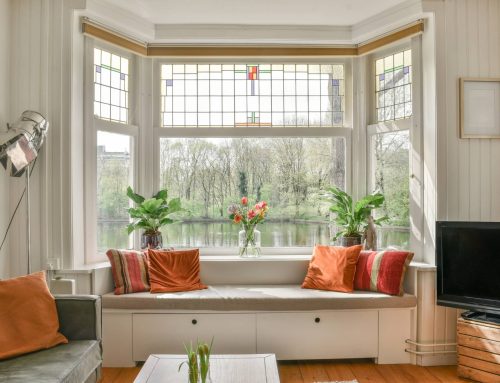Replacement windows and doors are more than just structural features; they play an important part in establishing a building’s identity, improving its aesthetics, and meeting the different demands of its residents. These basic components provide a myriad of alternatives for individuals to customise their living environments to fit their specific likes and requirements. Understanding how windows and doors may match your individual demands and style is critical whether you are remodelling or building a new house.
1. Functionality
The purpose of each area is a major concern when it comes to functioning. Different portions of a house have different tasks, and the windows and doors should be designed to meet these demands. Large windows that enable an abundance of natural light, for example, may create a welcoming and dynamic mood in a living room or dining area. Incorporating sliding or folding doors may also provide a sense of openness and flexibility by seamlessly connecting interior and outdoor living spaces. Bedrooms, on the other hand, may necessitate windows and doors that prioritise seclusion and the capacity to block out light to allow for unbroken sleep. Accessibility is another component of functionality to consider. Certain elements may be implemented into windows and doors to promote convenience and simplicity of use, depending on the individual demands of the homeowners. Wider doorways, lever handles, and low-threshold entries can provide simple access throughout the home for people with mobility issues. Similarly, windows with user-friendly opening mechanisms, such as crank handles or motorised choices, can allow easy operation, particularly in difficult-to-reach regions or for persons with physical impairments. Additionally, security is a major issue for homeowners, and windows and doors play an important part in offering a sense of safety and protection. Individuals may improve the security of their houses and have peace of mind by selecting windows and doors with strong locking mechanisms, reinforced frames, and impact-resistant glass. Furthermore, features such as multi-point locking systems and shatterproof laminated glass can dissuade prospective burglars and add an added degree of security. While practicality is important, style and aesthetics are equally important considerations when choosing windows and doors. Every homeowner has an own sense of style, and windows and doors provide a wide range of possibilities to satisfy personal tastes while also complementing the overall design of the home. There are different styles, materials, and finishes available, ranging from traditional to contemporary. A classic home, for example, may benefit from the warmth and elegance of hardwood windows and doors, whilst a modern home may benefit from sleek and minimalist aluminium frames. Colours, ornamental accents, and hardware may all be used to further customise the look, allowing homeowners to create a unified and visually attractive area.
2. Energy Efficiency
Energy-efficient windows and doors are designed to limit heat transmission and increase insulation, making them an excellent alternative for homeowners looking to reduce their environmental impact and energy expenditures. Your home’s exact demands may be met by selecting windows and doors that are properly adapted to your climate, location, and property orientation. For example, whether you live in a hot desert or a freezing northern area, choosing windows and doors with high thermal resistance can assist manage inside temperatures and lessen your reliance on heating or cooling equipment. These windows and doors are often constructed of sophisticated materials, such as low-emissivity glass, which reflects heat back into the room during the winter and inhibits solar heat gain during the summer. Your home’s aesthetic may be easily merged with energy-efficient windows and doors. There are several styles, materials, and finishes to pick from, allowing you to complement the architectural style and improve the overall visual appeal of your house. Whether your house has a modern design with clean lines or a more classic look with elaborate details, energy-efficient windows and doors may be tailored to match. If you have a modern house with a minimalist design, for example, you may choose slim and frameless windows that provide uninterrupted views and maximise natural light without sacrificing energy efficiency. If you have a classic or historic home, on the other hand, you may pick energy-efficient windows and doors that mimic the traditional attractiveness of wood frames while delivering greater insulation and durability. Energy-efficient windows and doors may contribute to the comfort and well-being of your house in addition to their practicality and appearance. These windows and doors assist maintain a steady inside temperature by limiting heat transmission, ensuring that you and your family are comfortable throughout the year. Furthermore, they may effectively block outside sounds, resulting in a calmer and more pleasant environment.
3. Style and Aesthetics
Windows and doors are more than just practical components of a home; they also have the ability to improve its design and aesthetics, adapting to the individual demands and preferences of homeowners. The style and design of windows and doors may have a significant impact on the overall look of a home, helping to create a coherent and personalised living area. Homeowners may imbue their houses with individuality and charm that matches their personal style by carefully selecting these features. It is essential to examine the architectural design of the property while selecting the style and aesthetics of windows and doors. Different architectural styles have different traits and features that can be emphasised or complimented by the proper use of windows and doors. To reflect the character of the era, a conventional Victorian-style home may require windows with detailed decorations such as ornate mullions or stained glass. A modern, minimalist home, on the other hand, may benefit from huge, broad windows and sleek, frameless doors that provide a sense of openness and simplicity. Material selection is very important in establishing the style and aesthetics of windows and doors. Each material has its own distinct properties, providing homeowners with a diverse choice of alternatives to fit their preferences. For those looking for a classic or rustic design, wood, for example, conveys warmth and natural beauty. It can be stained or painted to fit the home’s preferred colour scheme. Aluminium, on the other hand, has a sleek and futuristic appearance and is frequently used in modern or industrial-style homes. Furthermore, fibreglass and vinyl are practical solutions recognised for their durability and easy maintenance, making them ideal for homeowners looking for a blend of beauty and usefulness. Furthermore, the design and size of windows may significantly contribute to a home’s style and character. There are several alternatives for creating visual appeal, ranging from basic rectangular windows to more distinctive shapes such as arched or circular designs. Unusual window designs may serve as architectural focal points, capturing attention and providing a unique touch to the outside of a property. They can be deliberately positioned to frame picturesque vistas or to let natural light into certain sections of the house, improving both the beauty and usefulness.
4. Focal Points and Architectural Highlights
The design and placement of windows and doors is one of the primary ways in which they become focal points. Homeowners may create eye-catching elements that capture attention and leave a lasting impression by carefully selecting unique window forms and styles. Arched windows, for example, may lend a feeling of grandeur and elegance, and big, floor-to-ceiling windows can make a dramatic visual impression and highlight stunning vistas. Similarly, doors with detailed patterns, colourful glass inserts, or exquisite carvings may be eye-catching entryways that set the tone for the entire house. The strategic arrangement of windows and doors may also improve a building’s architectural design by emphasising its strengths and achieving a harmonic balance. Furthermore, the materials chosen for windows and doors play an important part in their position as architectural highlights. The selection of materials enables homeowners to match their design to the overall decor of their property. Wooden windows and doors, for example, may provide a rustic or classic touch, providing a warm and inviting ambiance. Sleek and modern designs, on the other hand, may be produced using materials such as aluminium or fibreglass, complimenting contemporary architectural forms. The use of materials in a variety of colours, textures, and finishes allows for even more customisation and personalization, allowing homeowners to show off their individual interests and preferences. In addition to their visual appeal, windows and doors serve important utilitarian purposes while staying focus points. Energy efficiency, security, and soundproofing may all be easily integrated into the design without sacrificing aesthetics. Energy-efficient windows, for example, can have double or triple glazing as well as low-emissivity coatings to provide optimal insulation and lower heating and cooling expenses. Similarly, doors may be outfitted with innovative locking mechanisms and durable materials to provide security as well as visual appeal. Soundproofing elements create a serene and quiet environment by insulating the interiors from outside noise. Furthermore, windows and doors act as a link between internal and outdoor areas, connecting residents to their surroundings. This link is especially useful for those who want to appreciate nature or display beautiful outside vistas. Incorporating large windows or sliding doors helps blur the lines between the inside and outside, providing a smooth transition and welcoming natural light into the living rooms. This not only improves the aesthetic attractiveness but also benefits to the residents’ well-being by encouraging a sense of openness and harmony with nature.
In conclusion, windows and doors are more than simply functional pieces; they are crucial components that may be modified to fulfil specific demands and represent personal style. Whether it’s maximising natural light, guaranteeing energy efficiency, or improving aesthetics, there are several alternatives to meet every need. By carefully considering practicality, energy efficiency, design, and comfort, one may choose the ideal windows and doors that not only make a house into a home, but also exhibit one’s own personality and preferences.






